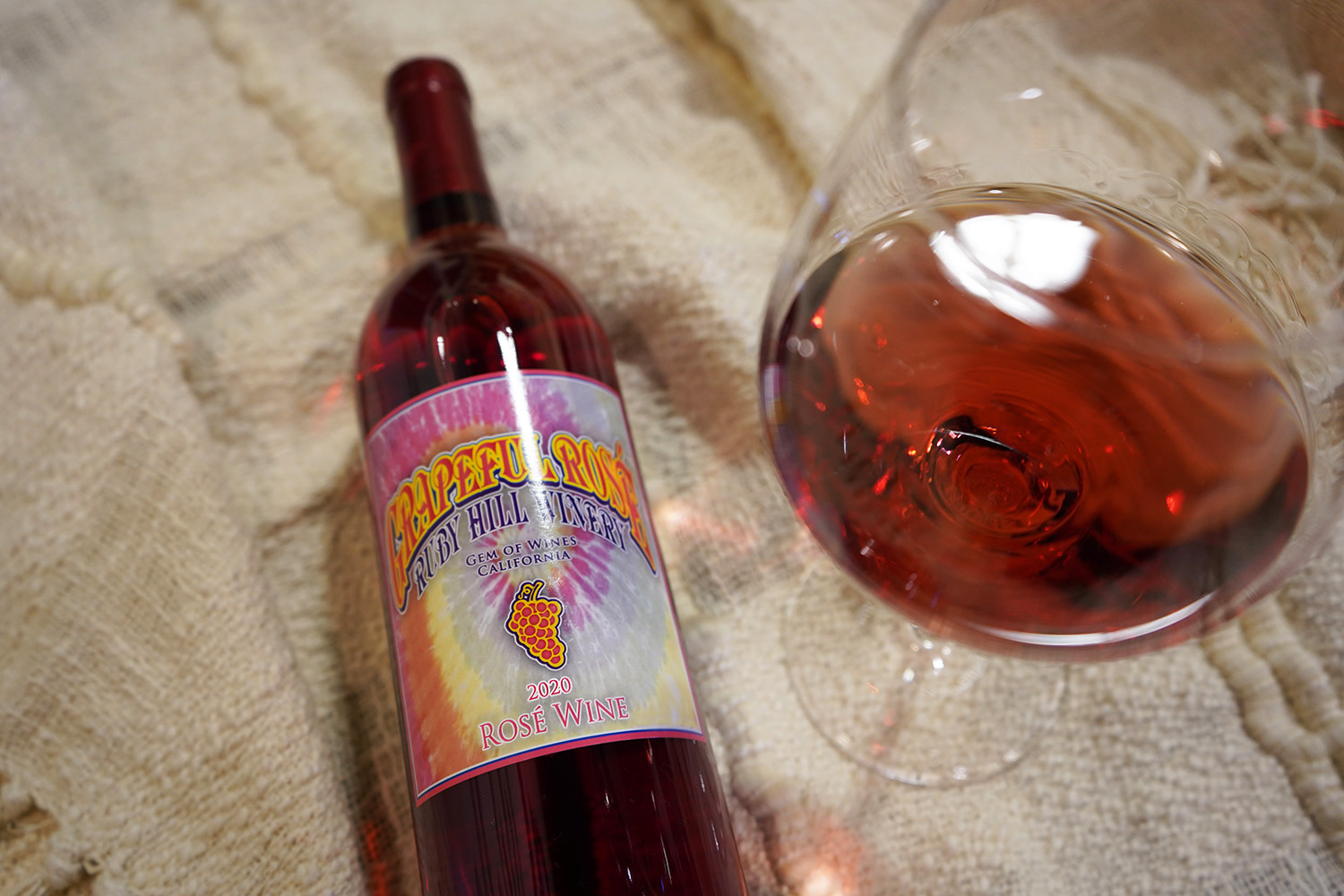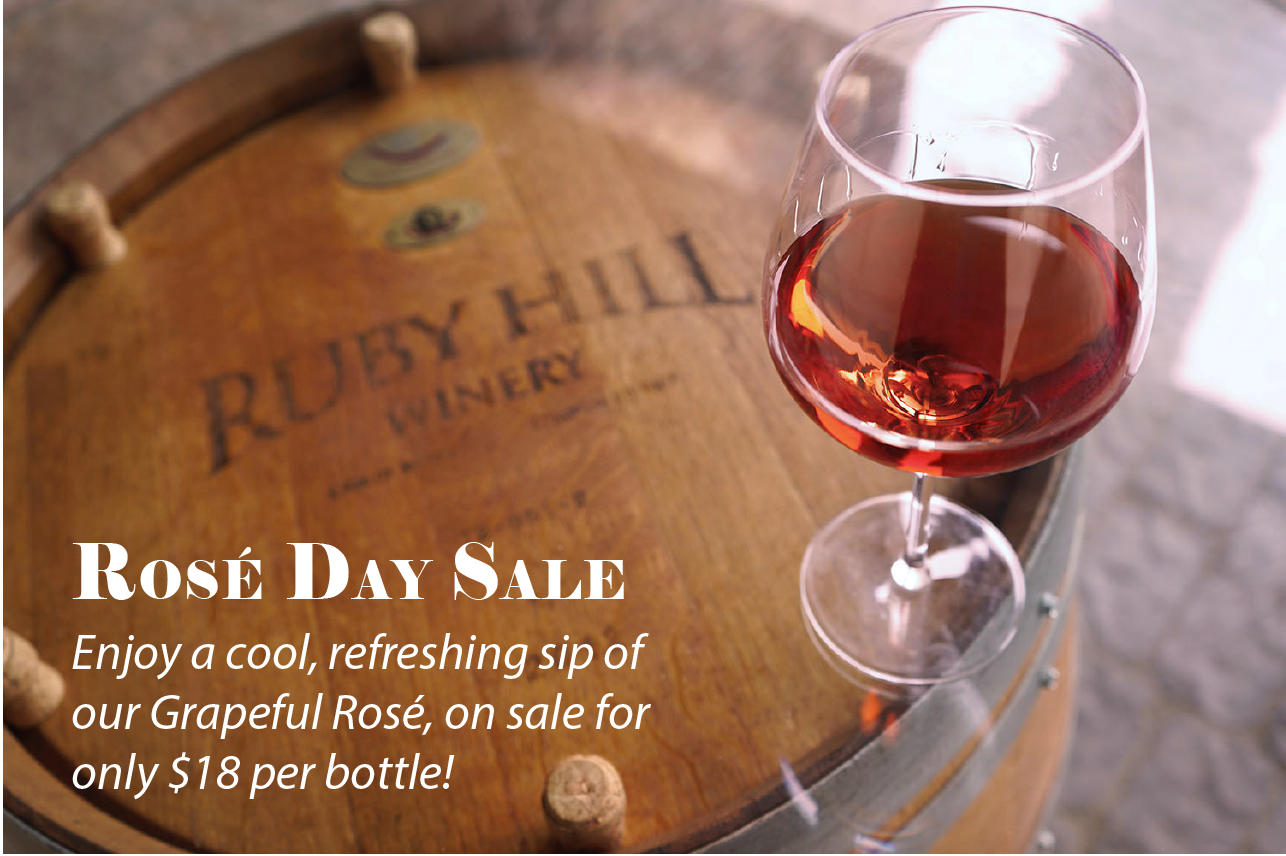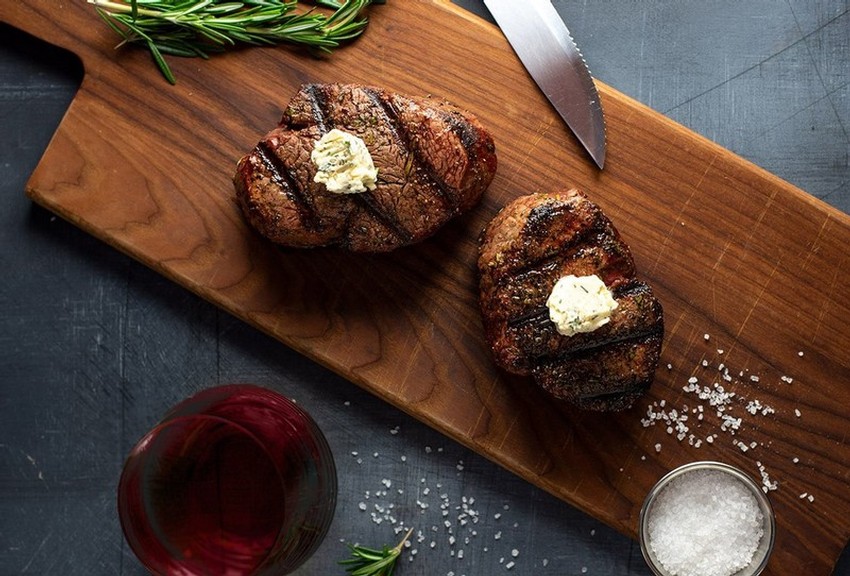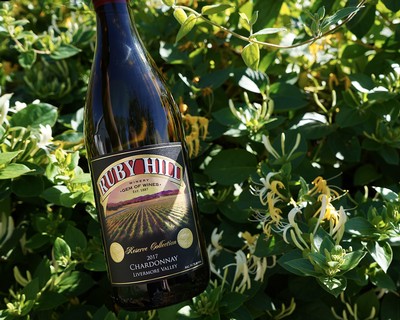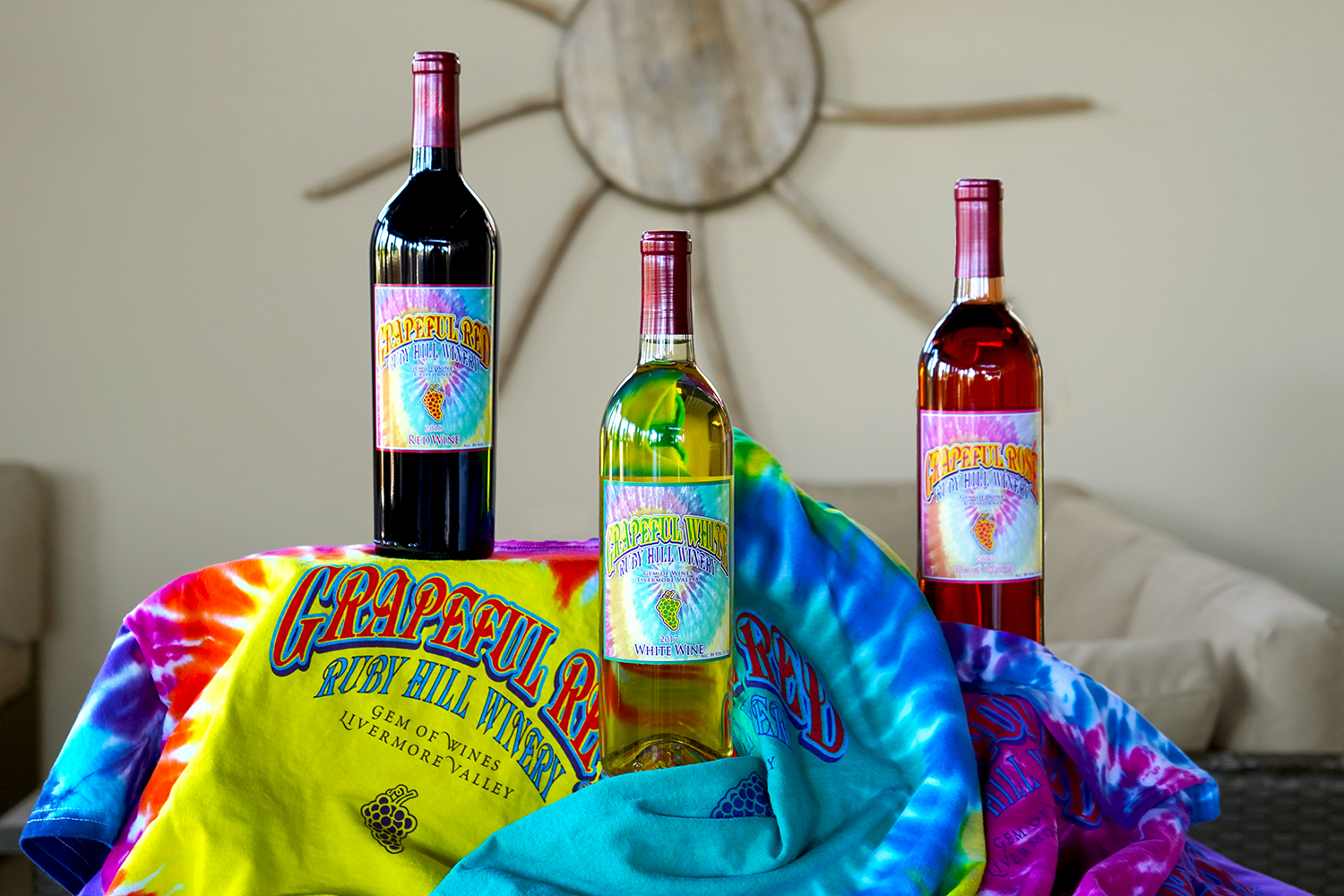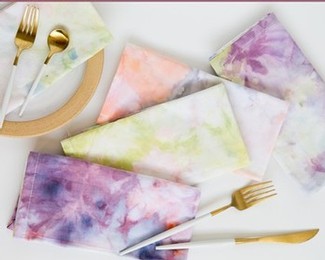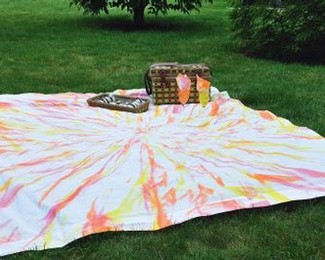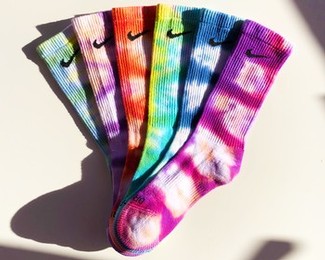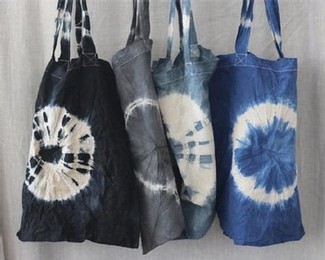Why Our Labels Matter
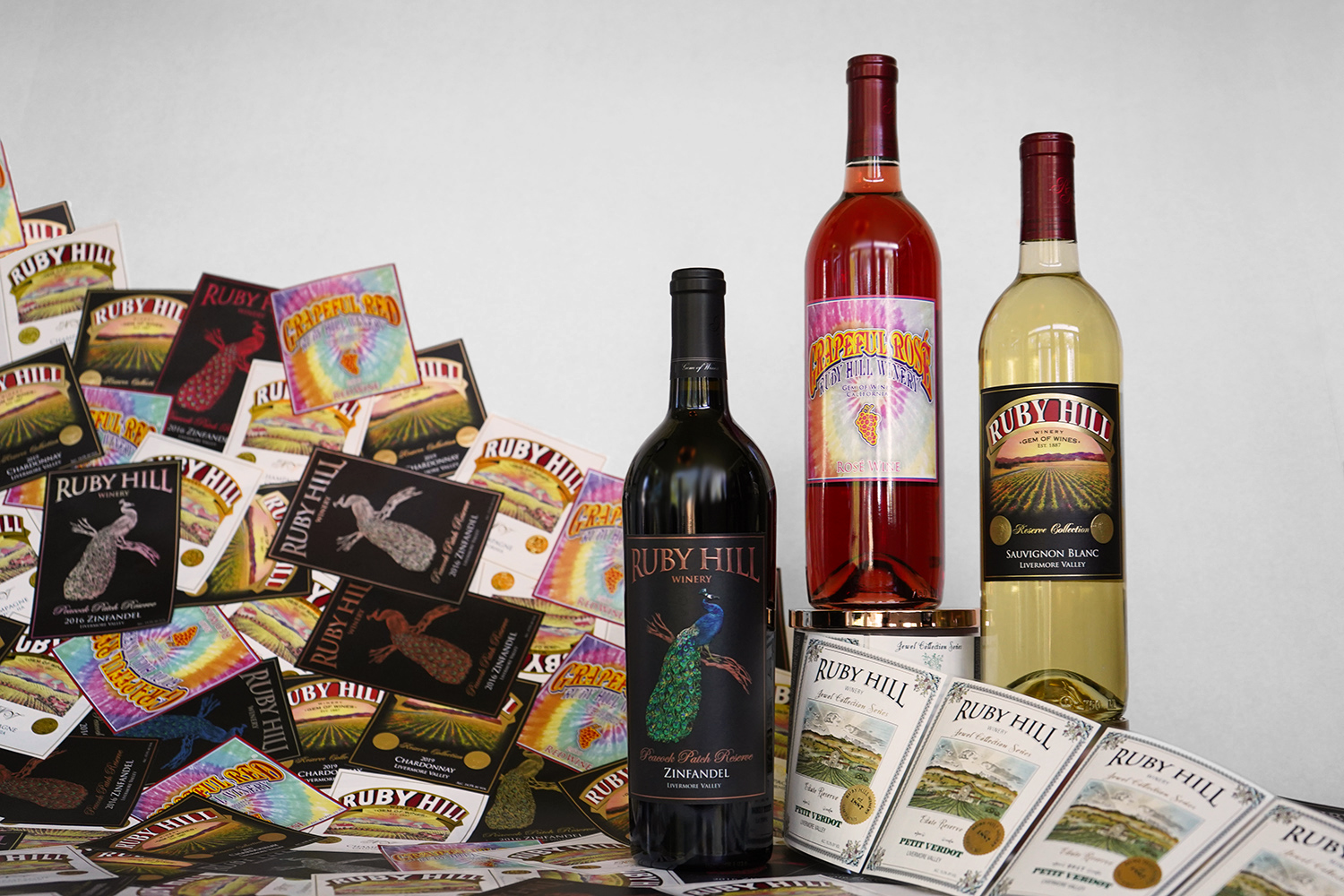 They say it’s wrong to judge a book by its cover, but when it comes to wine we think it’s alright to break that rule. We, just like many other wineries, pack symbolism and significance into each of our label designs. It is our desire that our members and patrons enjoy the full experience of our wine--from the looks to the taste. This week, we bottled some exciting new wines, and took some time to reflect on the history and significance of wine labels.
They say it’s wrong to judge a book by its cover, but when it comes to wine we think it’s alright to break that rule. We, just like many other wineries, pack symbolism and significance into each of our label designs. It is our desire that our members and patrons enjoy the full experience of our wine--from the looks to the taste. This week, we bottled some exciting new wines, and took some time to reflect on the history and significance of wine labels.
Believe it or not, wine labels have a long history. Wine jars from 1352 BC, unearthed in the tomb of King Tut, were found with labels designating the winemaker, vintage, region of origin, and sometimes even an indicator of the quality of the wine. Even by modern labelling standards, these labels were fairly detailed. In the Persian empire, which had a reputation for cultivating wine snobs, labelling became part of standard practice in winemaking. As glass bottles gained popularity, parchment indicating the vintage and varietal of the wine would be tied around the neck of the bottle, much like what we would call a hang tag today. The oldest preserved label of this type was written by Pierre Perignon, a French monk and winemaker.
Paper wine labels like the ones we see today emerged in Germany in the 1800s and were generally used just to denote the wine’s varietal. In Champagne, France, vintners began using gilded labels to denote their grander fine wines. As labeling became commonplace, the quality and design of the label became like a crown for the wine, with the winemaker’s finest creations enrobed in the most ornate labels. With the invention of the lithograph, labelling became even more of an art. In essence, color lithography was the very first kind of photo printer, allowing for colorful and artistic expression to be replicated en masse. Winemakers could emphasize the luxury of their product or the personality of the land it came from.
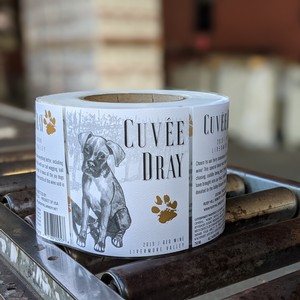 As the story of wine labels gets closer to modern day, we’ve seen famous wineries commission label art from even more famous artists. Some wineries ornament their bottles with the awards earned by the winery. At Ruby Hill Winery, the gold seal on our wines represents the gold medals awarded by the California State fair. We also like to celebrate the best things in life with our designs; we commemorate good times with tie-dye, wildlife with our Peacock, and furry friends with our (not-yet-released) Cuvée Dray.
As the story of wine labels gets closer to modern day, we’ve seen famous wineries commission label art from even more famous artists. Some wineries ornament their bottles with the awards earned by the winery. At Ruby Hill Winery, the gold seal on our wines represents the gold medals awarded by the California State fair. We also like to celebrate the best things in life with our designs; we commemorate good times with tie-dye, wildlife with our Peacock, and furry friends with our (not-yet-released) Cuvée Dray.
If you’ve laid a wine down to age in the cellar, the last thing you need is a garish label haunting your collection, no matter how delicious the wine is. Whether you’re looking for something classy, playful, or refined, we hope you enjoy the variety and expression gracing each and every bottle of Ruby Hill Wines.
Our Sparkling Guide to Bubbly Wine
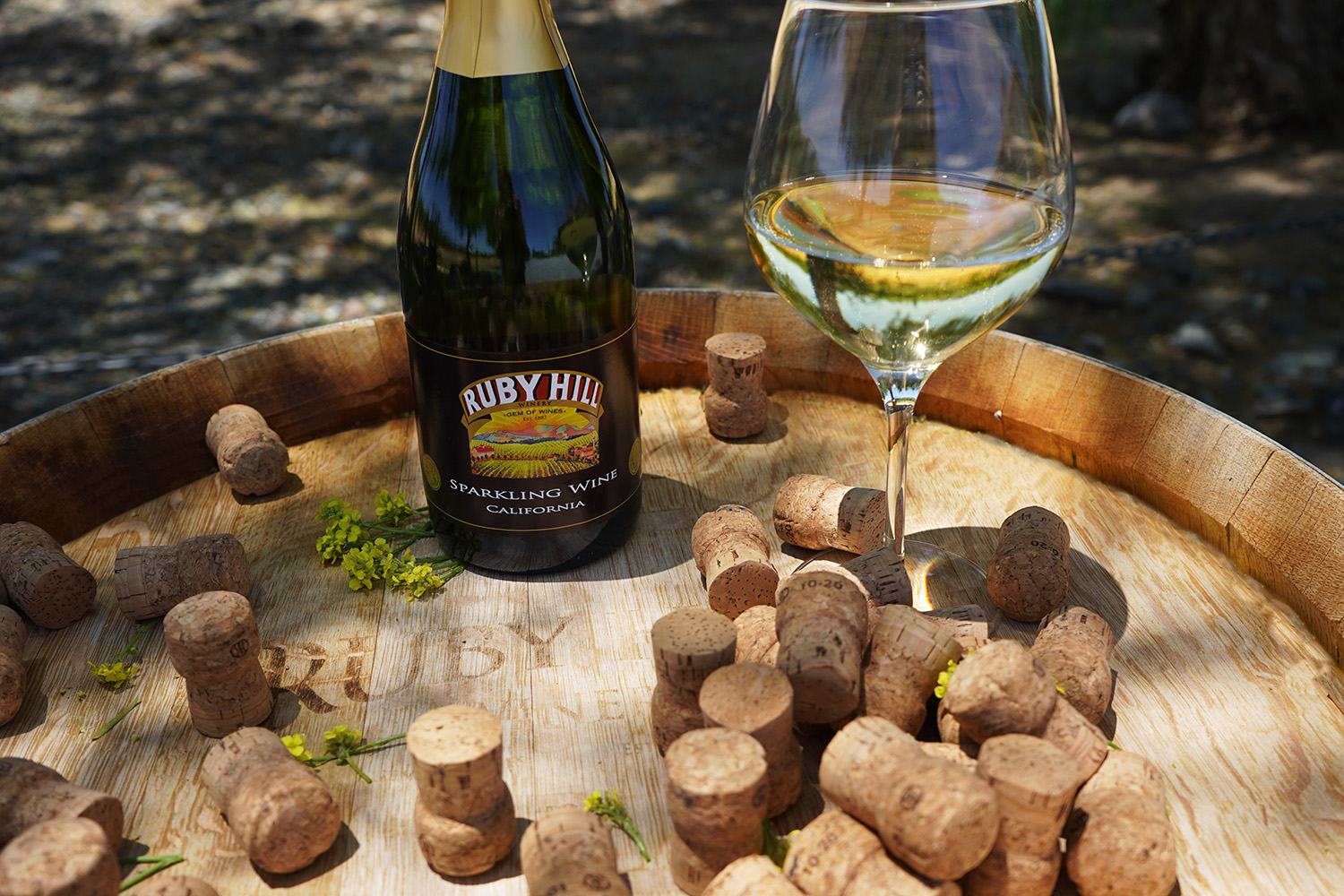
The Sweet Spot
Works like "doux" and "sec" reflect the French Heritage of Champagne. These words are used to indicate the level of sweetness in a sparkling wine. From dry to sweet, some terms you may see are:
- Brut Nature (very dry)
- Extra Brut (dry)
- Brut (off-dry to dry)
- Extra Sec (medium- to off-dry)
- Sec (medium-dry)
- Demi-Sec (semisweet)
- Doux (very sweet)
A Game of Names
Even if they are made with the same varietal and method, American Sparkling Wines will not be labeled as Champagne. Just as “Cognac” must come from Cognac in France but “brandy” can be made anywhere, so "Champagne'' must be grown and made in the Champagne region, and consist of only Chardonnay, Pinot Noir and Pinot Meunier. Champagne made from 100% Chardonnay grapes is called "blanc de blancs" (white of white), while champagne made from dark grapes is called "blanc de noirs" (white of black). Names like Cava, Prosecco, Crémant, and Sekt are common terms for European sparkling wines from outside of the Champagne region. In the US, Sparkling wine can be made from any varietal, but we've taken notes from France, using predominantly Chardonnay and Pinot Noir grapes. Our Sparkling Wine here at Ruby Hill Winery is made from 100% Chardonnay.
You've Got a Sparkle in your Wines
Bubbles in Sparkling wine technically have the same composition as any carbonated beverage. Carbon Dioxide makes those tiny bubbles we all know and love. There is no single method for creating these beautiful sparkles, though some varieties of wine have rigid specifications of the proper procedure. When wine ferments, yeasts naturally release CO2. In the original Champagne method, winemakers cause the wine to go through a second fermentation in the bottle, trapping the gasses in the wine and creating the fine carbonation we all know and love. The "tank method" relies on the same process, but the secondary fermentation occurs in a tank instead of the bottles. Another method involves charging the wine with CO2, resulting in the same delicious bubbles dancing along the palate. All good sparkling is bright and perfect for food pairing and celebrating. Look for balance between acid and sweetness, and you're golden!
Have you had a chance to enjoy Ruby Hill Winery's Sparkling Wine?
Now's a perfect time! This weekend only, our Sparkling is available for only $16 per bottle.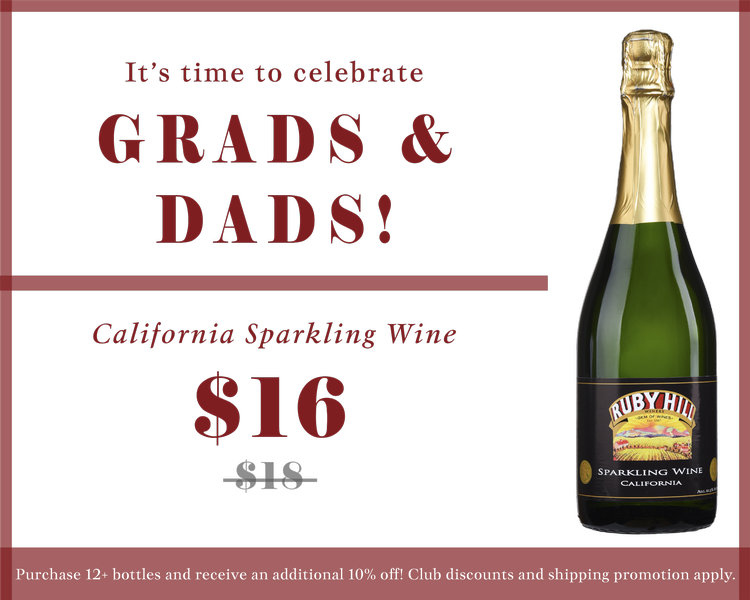
Some Good Things About 2020
2020 was a milestone year for many of us. Now that we’re well along the way in 2021, we’re sipping on our all new 2020 Grapeful Rosé and thought it would be a good time to reflect on what made 2020 special in a good way. We can’t help but look for the silver linings in the last year. It turns out, it’s healthy to look at some things through rose colored glasses (or in our case, rosé colored!).
Reaching for the Stars.
In May 2020, SpaceX sent Doug Hurley and Bob Behnken into space, departing from the same launchpad as the Apollo missions decades ago. This was the first launch from American soil since the space shuttle program was retired in 2011. At the end of July, NASA launched Perseverance, the most advanced Mars Rover yet. The rover, nicknamed “Percy” carried Ingenuity, a small drone-like helicopter, safely to the surface of the Red Planet (they touched down in early 2021).
Back Down to Earth.
Even if we were driven to it by boredom, many of us have emerged with new skills. Puzzles, board games, baking, and gardening became our mainstays in 2020. During seasons of sheltering in our homes, we all had a chance to revisit some old hobbies or learn new ones. Restaurants released their signature recipes so we could practice recreating the magic in our own homes. Some of us even practiced our sewing skills, making face masks when supply fell short.
Making Furry Friends.
While the percentage of people staying home increased dramatically, the number of cats and dogs in shelters decreased. These precious pets found loving foster homes, or even their forever family. The number of strays decreased, and animal shelters were delighted to see fewer animals in need of homes. We can’t help but smile when we think of the excited wagging and peaceful purring of these heartwarming companions.
Developments in health.
While the world grappled with the novel coronavirus, the Congo was also able to send home its last Ebola patient, a tremendous victory against the disease’s second deadliest outbreak. In August of 2020, Africa was declared free of Polio, nearly 25 years after the disease had been eradicated from the western hemisphere. Healthcare workers traveled through remote and hostile regions to administer vaccines to individuals in Nigeria, the last foothold of polio on the continent.
Knowing what we need.
Through missing the things and people we couldn’t have, we learned what we love. We realized how much we love and need sports, and the way it brings us together. The events we missed, from graduation celebrations and birthday parties to concerts and weddings, showed us what was really important to us. In 2020, we realized how badly we need each other.
Connection makes us human. It’s the perfect day to write a note or an email to a friend, have coffee or a zoom call, go wine tasting or out to dinner. There’s no day like today to celebrate togetherness.
Making a Wine Lover's Playlist
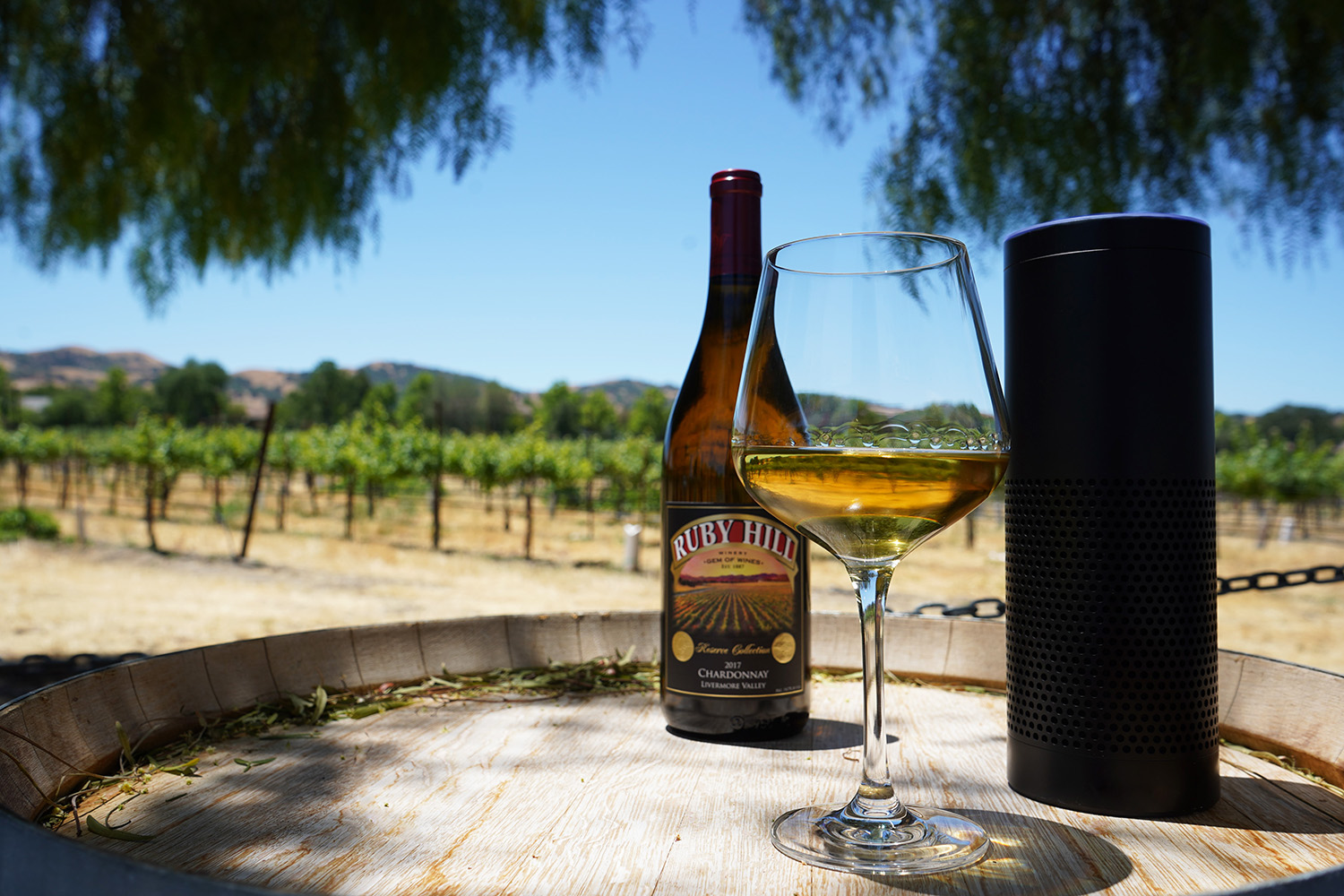
Hey Brother, Pour the Wine - Dean Martin (1959)
A romantic vintage jaunt celebrating love and wine, this song brings to mind a warm evening on a gorgeous terrace, overlooking a flourishing vineyard.
The Days of Wine and Roses - Henry Mancini (1962)
Covered by nearly every iconic crooner, this affectionate song is perfect for slow dancing. (Try the version by Joe Pass for a swanky instrumental take on the song.)
How Does the Wine Taste - Barbara Streisand (1964)
This brassy and victorious take on a song from a forgotten musical called “We Take the Town” brings to mind the yearning of new love.
Tiny Bubbles - Don Ho (1966)
This timeless song celebrates one of our favorite things: bubbles in our wine. There’s nothing quite as charming and celebratory as a glass of sparkling wine.
Lips of Wine - Dennis Brown (1972)
This reggae rendition has such perfect rhythm you won’t be able to keep your foot from tapping. Don’t be afraid to sing along!
Scenes from an Italian Restaurant - Billy Joel (1977)
This medley masterpiece is a lonely piano ballad, joyful Dixieland jazz, and a rock-and-roll celebration all in one.
Winelight - Grover Washington Jr (1980)
A relaxed, intoxicating jazz track that makes you want to take another sip and dance a bit. Don’t be too surprised if you want to put this one on repeat all evening.
Red Red Wine - UB40 (1988)
Though it was originally performed by Neil Diamond, this version is a laid back reggae jam. This rendition gained wild popularity, and it deserves it.
Lilac Wine - Elkie Brooks (1994)
This ballad speaks of lost love and reminiscence, perfect for dreamy summer evenings. Good for remembering the past without losing the hope of the future.
Good Friend and a Glass of Wine - LeAnn Rimes (2007)
It’s what everyone needs these days, isn’t it? Just like wine, this classic is best enjoyed with a friend or two.
For the First Time - The Script (2010)
At once captivating and cathartic, this pop rock song is all about going back to basics and reconnecting with people you’ve missed.
Wine and Chocolates - Theophilus London (2011)
What says “I love you” better than wine and chocolate at your doorstep? Enjoy the flow of this song alongside your favorite semisweet and a glass of red.
You Taste Like Wine - The Collection (2017)
A danceable and joyous song, this indie-folk piece celebrates the taste of love and the taste of wine—a few of our favorite things.
What did we miss? Let us know @rubyhillwines!
Proud as a Peacock
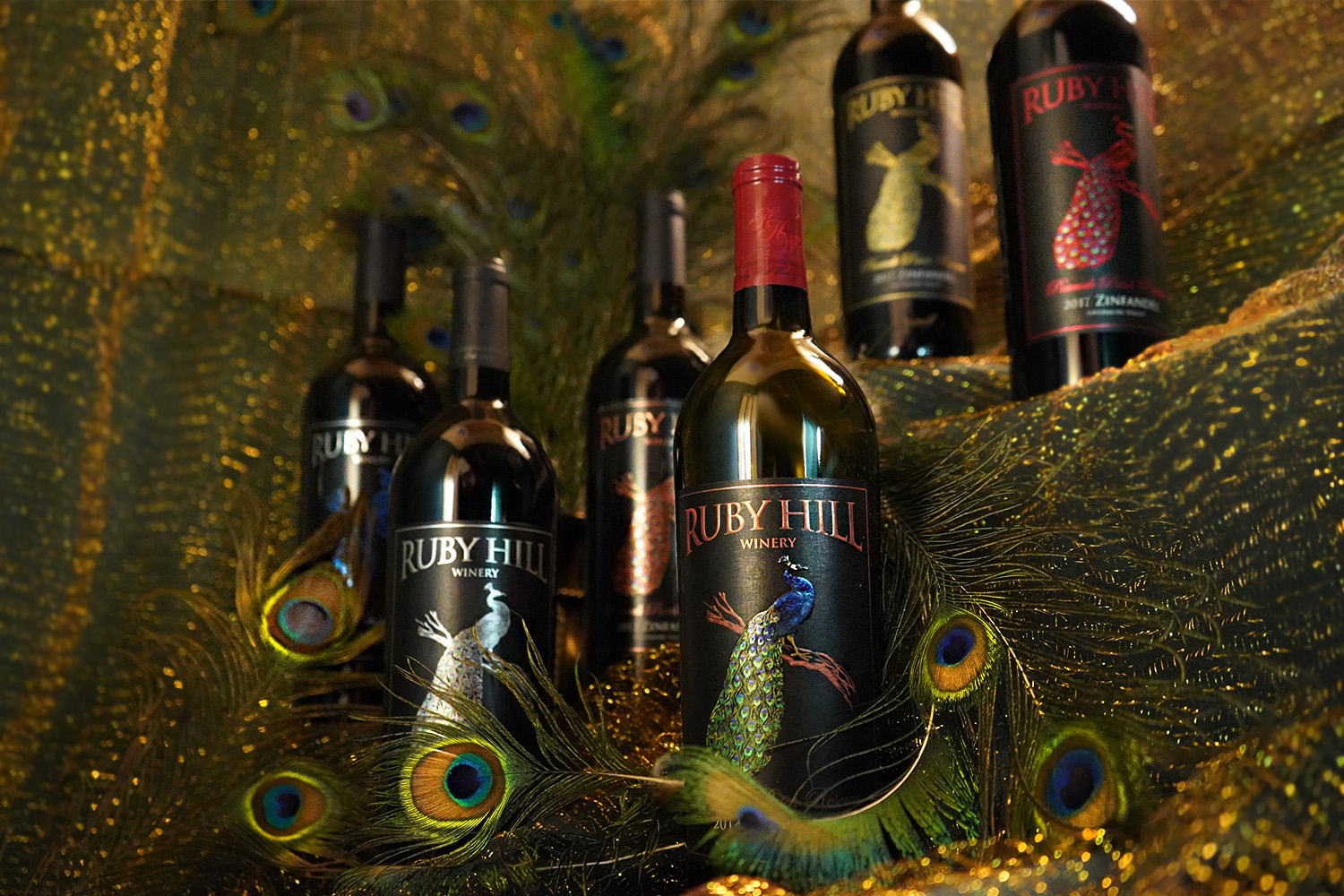 In the southwest corner of our estate vineyard, a block of Zinfandel vines grow in gravelly soil. The grapes produced by these vines are flavorful and bold, giving our Peacock Patch Zinfandel the most luxurious aromas and flavors. To celebrate the iridescent bird that graces our bottles, we wanted to share some fascinating facts about the peacock.
In the southwest corner of our estate vineyard, a block of Zinfandel vines grow in gravelly soil. The grapes produced by these vines are flavorful and bold, giving our Peacock Patch Zinfandel the most luxurious aromas and flavors. To celebrate the iridescent bird that graces our bottles, we wanted to share some fascinating facts about the peacock.
- Not all peacocks are actually called peacocks. The word “peacock” refers only to the males of the species peafowl. Females are called peahens and babies are called peachicks (not to be confused with chickpeas). Males are the most famous because they sport the characteristic kaleidoscopic plumage. Peahens and chicks are a dusty brown color.
- Peacocks’ “tail feathers” don’t actually grow from their tail. The iconic train of feathers grows from the males’ backs and drags gracefully behind them. The train can be made up of 200 individual metallic feathers with dazzling eyespots and gorgeous sheen. Even though their trains can weigh up to 13 pounds, all peafowl are capable of some flight, especially to escape predators. Peahens will sometimes allow their chicks to hitch a ride on their back to fly up to safety in the trees.
- Peacocks are cousins of pheasants, turkeys, and even domestic chickens. Similarly to chickens, peacocks like to roost in high places but will not be seen soaring through the sky. Peacocks prefer running to flying, with an impressive top speed of about 10 miles per hour.
- Peacocks are a natural alarm system. Their usual call sounds like a shrill cry. Wild peacocks’ cry can alert the surrounding forest inhabitants of a predator’s arrival. Not only do their cries outwit tigers, they are also said to signal the coming of rain—or even a monsoon. Peafowls make other expressive noises as well, including a sassy, subtle “honk” when annoyed.
- Peafowl are surprisingly adaptable. Native to the forests and lowlands of the Indian subcontinent, they have been introduced to new climates all over the world. Here in the Livermore valley, we are always enchanted to see the peacocks who visit our “Peacock Patch,” the block of Zinfandel grapes named in honor of these majestic birds.
- Peacocks appear in stories throughout history and across cultures. They are the national bird of India, often appearing in their mystical stories as harbingers of rain. In Greek tradition, peacocks were protected as sacred to the goddess Hera. In some legends of Robin Hood, the hero uses arrows with peacock feather fletching.
- Peacocks are reminiscent of phoenixes. Every year, peacocks go through a moulting season, wherein they shed all of the magnificent feathers from their train. Though their upper body remains a gorgeous, iridescent blue, their appearance more closely resembles peahens for a few months until their train regrows. For this reason, the peacock is heralded as similar to the mythological phoenix, losing and regaining its ornamentation in cycles.
- Peacocks are proud to strut their stuff. Fitting to their extravagant display of fanning their train, these fabulous birds have earned their place as a symbol of both pride and luxury. A group of peacocks is sometimes called a “party” or even an “ostentation.” These birds promenade through the forest, foraging together and relying on safety in numbers.
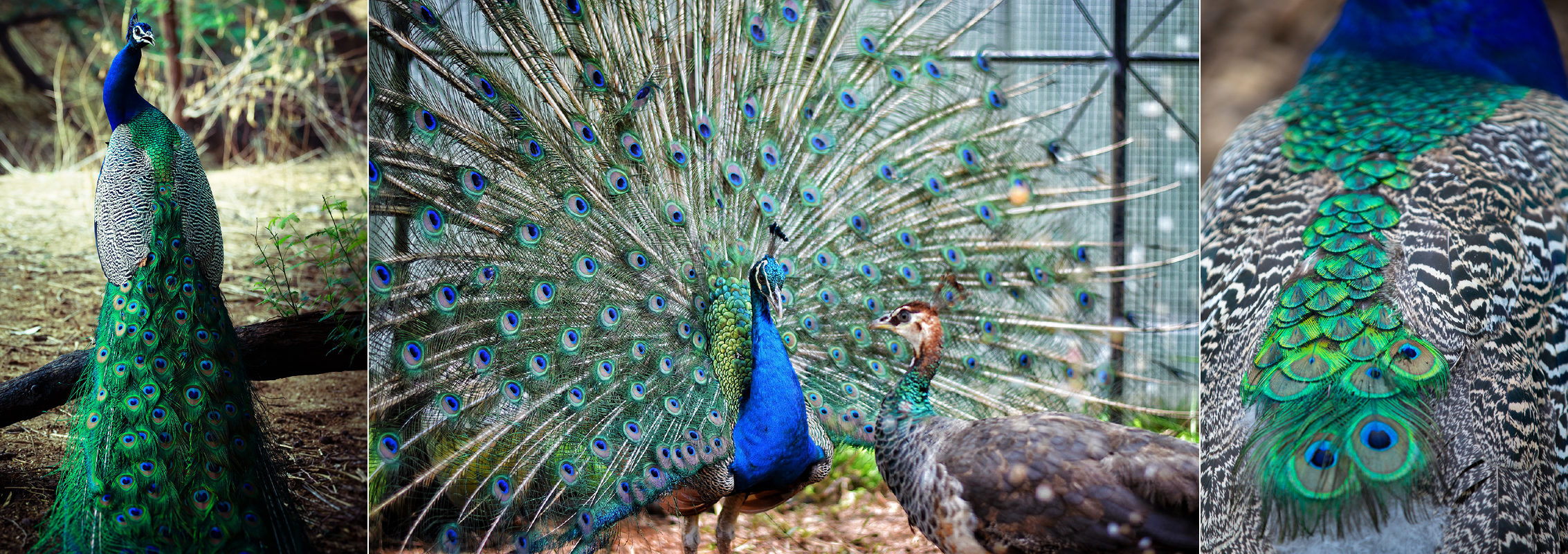
If safety is in numbers, make sure your Peacock Patch Zin
doesn't go home alone! This smooth wine is dense with fruit flavor
and pairs will with all your summer cookout dishes.
Get some while it's still on sale!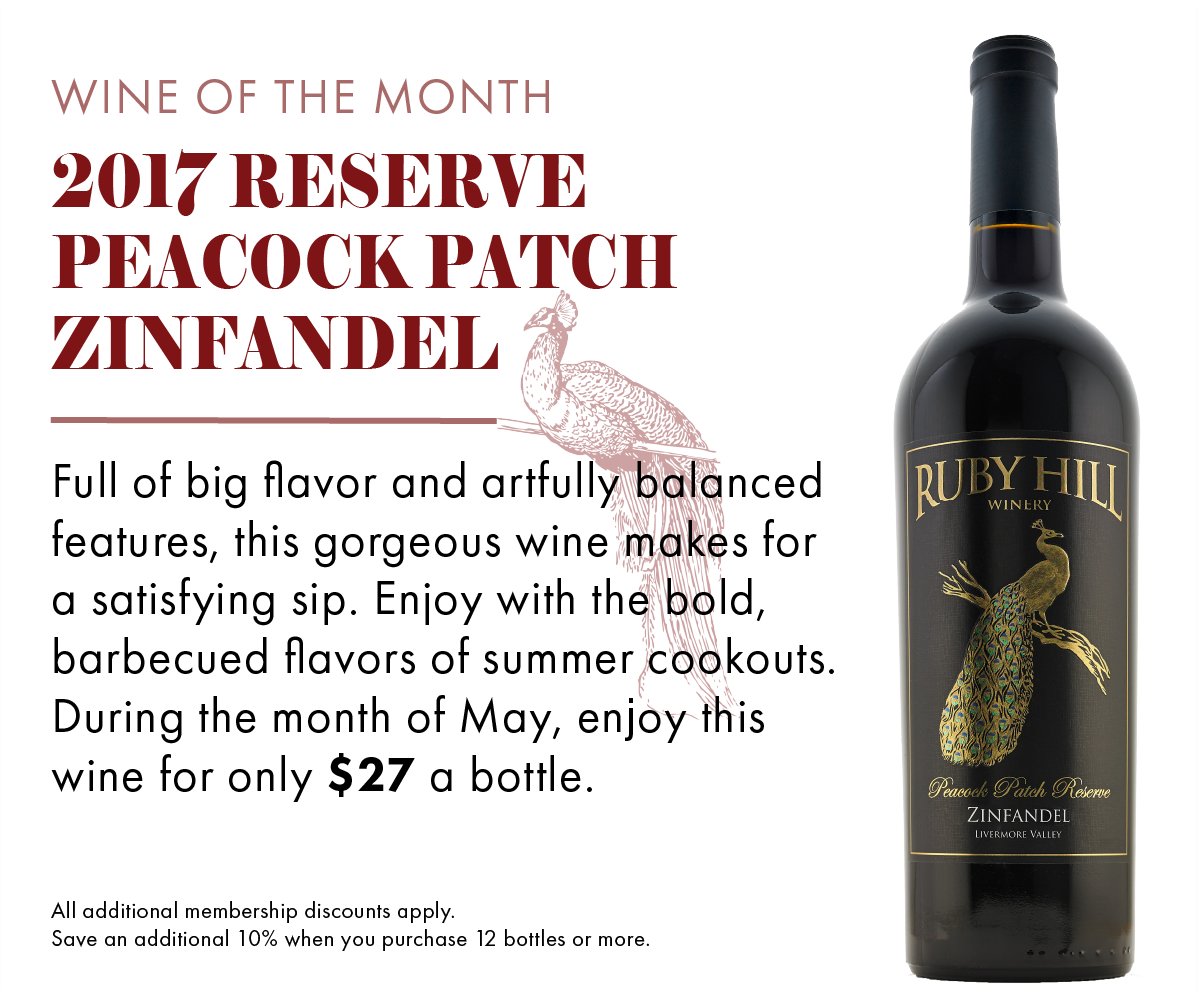
Feeling Oaky: Weird Facts about Barrels
 They say “it’s what’s on the inside that counts” and when it comes to our wine barrels, we agree. Even still, we’re happy to take a moment to appreciate what these oaken masterpieces bring to the industry. Below, we’ve included some of our favorite obscure barrel facts. See if you can find a favorite!
They say “it’s what’s on the inside that counts” and when it comes to our wine barrels, we agree. Even still, we’re happy to take a moment to appreciate what these oaken masterpieces bring to the industry. Below, we’ve included some of our favorite obscure barrel facts. See if you can find a favorite!
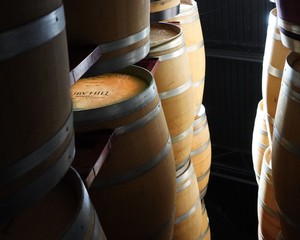 Barrels were a much needed innovation
Barrels were a much needed innovation
Wooden barrels have an illustrious history that dates back as far as 350 BC. Prior to barrels, wine was stored in containers made of clay or goat skins. The clay containers, called amphorae, were infamous for being heavy and highly breakable (not to mention the flavor they could impart). The transition from clay to wooden barrels began during the Roman times.
Tiny artisan barrels were a beloved possession
Early barrels were produced on a very small scale as drinking vessels. Small staves of oak, yew or pine would be tightly fastened together by metal loops. Craftsmen would make these vessels using precious metals and the resulting items were so prized by those who owned them that they sometimes chose to be buried with them.
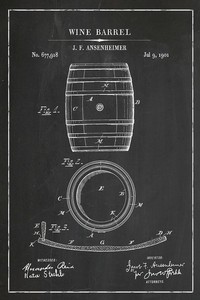 Early barrels might remind you of an IKEA project
Early barrels might remind you of an IKEA project
Archaeological finds of early full-size wooden barrels show that some barrels included Roman numerals on the staves to aid in assembly if needed. After the barrels had fulfilled their purpose, the staves were often reused to line shallow wells. Barrels in this era could be made from silver fir, cedar, larch, or oak.
Barrels brought peril
As barrels continued to be produced as handy tools, they earned a small role in warfare. While besieging cities, Julius Caesar would order barrels of tar to be set ablaze and then catapulted into the city. On at least one occasion, the town returned fire by rolling flaming barrels back down onto the attacking forces.
Barrels give some up to the angels
Even though barrels are remarkably watertight, there is always a slight loss of volume due to evaporation while wine or another distilled spirit is aging in an oak barrel. The evaporated portion is a combination of water and alcohol and is referred to as the “angels share.” Winemakers account for this loss and monitor the capacity of the barrels.
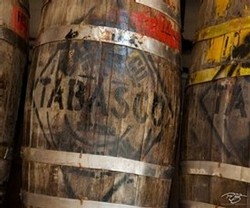
Barrels are a cask of all trades
You probably knew that barrels are the container of choice for aging wine and whiskey, but how about other products? Historically, resources like gunpowder, meat, fish, paint, honey, nails and tallow would be stored in wooden casks. In modern times, barrels are used for products like traditional balsamic vinegar, specialty tequila, and Tabasco sauce.
Barrel anatomy words are great for scrabble
The words used to describe the different pieces of a barrel include staves, bilge, chime, and bung hole. Rather than a “lid” wine barrels have a small hole, called a bung hole. The bung hole is drilled in one of the staves at the bilge, which is the widest part of the barrel. The stopper (called the “bung”) is usually made of white silicone and keeps the precious cargo from leaking out.
If you would like to repurpose a decommissioned Ruby Hill barrel, we're selling! Our 100% oak barrels have served their time keeping our wine safe and delicious and are now looking for a new home. Available for pickup anytime at our sister winery, Rubino Estates. Call (925) 484-1699 with inquiries or to purchase your own!
Grilled Filet Mignon for Jewel Cabernet Sauvignon
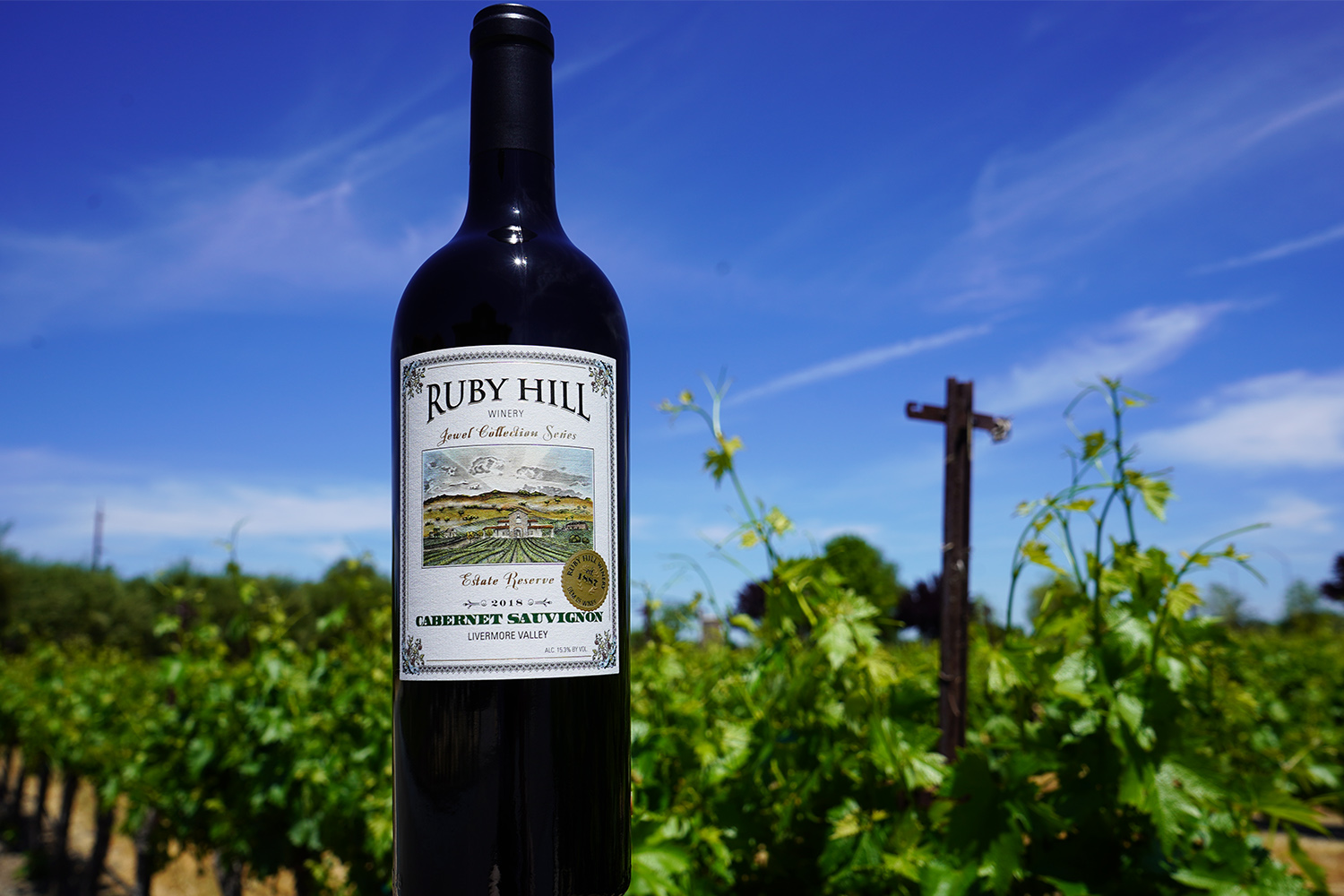
Below, we’ve included a quick guide for reliably delicious grilled filet mignon, with mouthwatering char and perfect color. When grilling your filet, a minute or two can make a world of difference, so don’t sweat it if it takes time to perfect your technique.
Foolproof Grilled Filet Mignon
For the Steak
- 2 10-ounce tenderloin beef filets (roughly 2 inches thick)
- 1 teaspoon olive oil
- 1 tablespoon fresh rosemary, removed from sprig and minced
- salt and pepper to taste
For the Garlic & Herb Butter
- 1/2 stick of butter
- 1 tablespoon fresh rosemary, removed from sprig and minced
- 1 garlic clove, minced
Instructions
- Season both sides of the filet generously with salt and pepper and fresh rosemary. Rub with a little olive oil and let rest for 30 minutes before cooking. This is to bring the steak to room temperature and ensure your cooking times are accurate.
- While the steak is resting, begin preparing the butter. Gently soften (do not melt) the butter in the microwave, about 10-15 seconds. When the butter is soft and malleable, work the rosemary and garlic into the butter.
- Spoon the seasoned butter onto tin foil, reshaping it to roughly resemble two large pats of butter. Be as artistic as you like, they don’t have to be perfect.
- Refrigerate for at least 10 minutes; remove 5 minutes prior to topping your filet.
- Preheat your grill to high heat. Keep the lid closed and let the internal temperature reach around 500° F.
- Once the steaks have reached room temp in their seasonings and the grill is preheated, place the filets face down on the grill and sear undisturbed for 5 minutes. Flip the filets and sear for an additional 5 minutes. This is ideal for medium rare.
- Remove filets from the grill and set on a plate. Let sit for 5 minutes before serving. This is important to bring your steak to its final serving temperature and seal in the precious juices. Top with a slice of your seasoned butter and serve with a glass of wine.
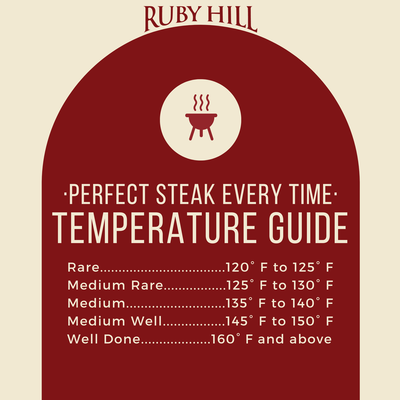 Additional Tips:
Additional Tips:
If you have a favorite level of doneness, adjust the sear time. For rare, cut down the sear time to 4 minutes per side. Increase one minute for each level of doneness:
Medium rare, 5 minutes.
Medium, 6-7 minutes.
Medium well, 8+ minutes.
Remember, depending on the size of the steak, the more or less time it will take. This recipe is ideal for an 8-10 ounce portion, roughly 2 inches thick. We recommend using a digital thermometer to confirm, and enjoy making the perfect steak every time!
Serve your filet with a glass of our new 2018 Jewel Cabernet Sauvignon and your favorite side. We recommend continuing the celebration of all things cookout with Grilled Mexican Street Corn or Old-Fashioned Potato Salad!
Are you ready for barbecue season? Tag us on social media to let us know your favorite cookout pairings @rubyhillwines!
A Wine Glass Bouquet
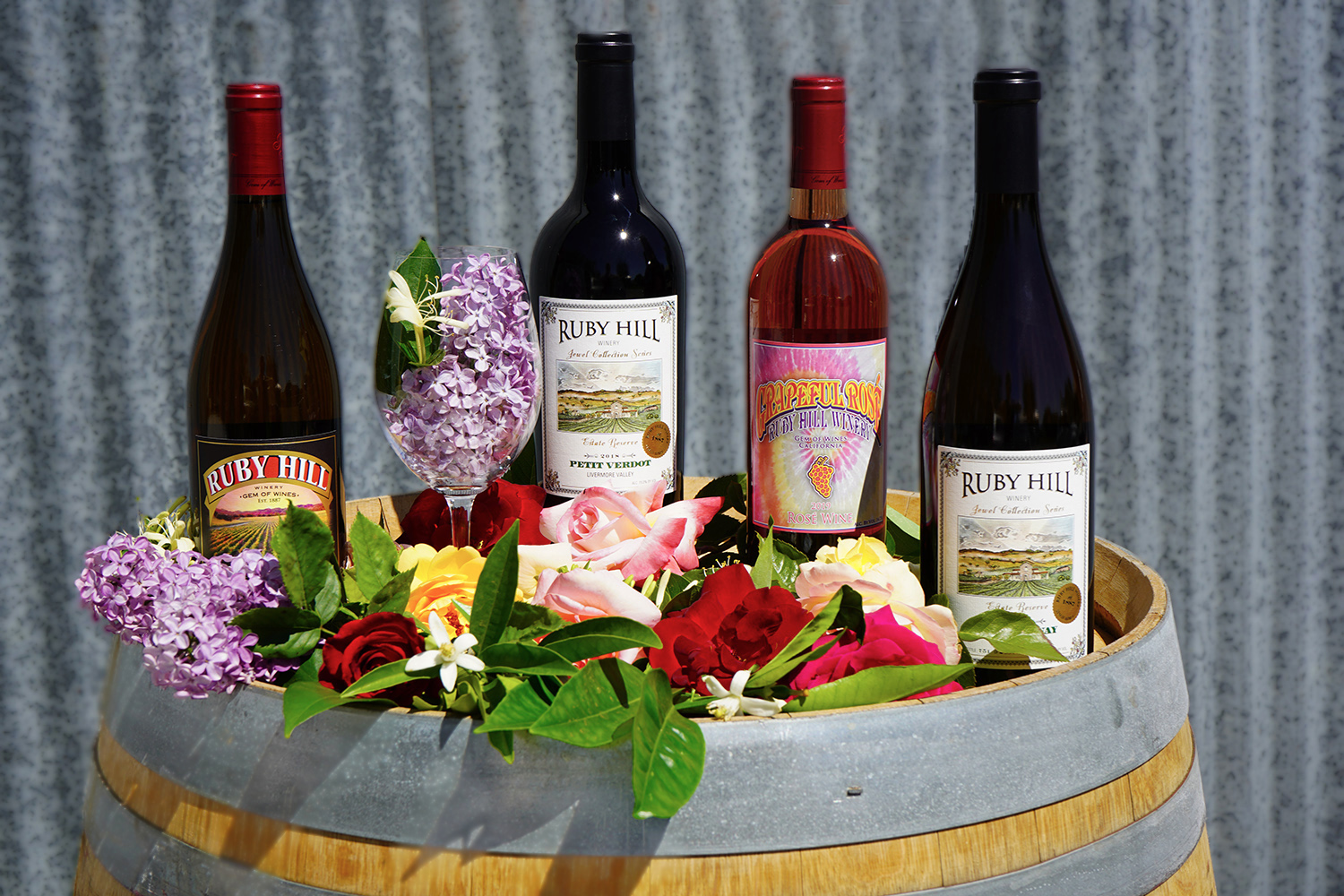
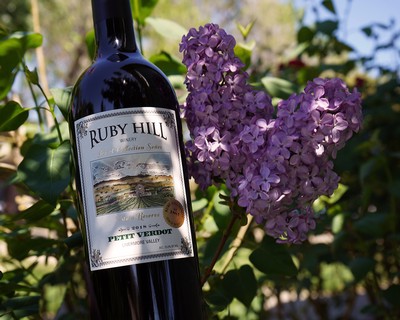 Jewel Collection Petit Verdot and Lilacs
Jewel Collection Petit Verdot and Lilacs
The Petit Verdot varietal is known for carrying an essence of violet amidst bold flavors. In addition to these delicate complexities, our Jewel Petit Verdot presents pleasant notes of lilac. Lilac flowers grow in fragrant bunches, blossoming for only 2 weeks in late spring. These blossoms are featured in Greek myth to represent the joy and first love of youth. In our Jewel Petit Verdot, we say that love has matured well!
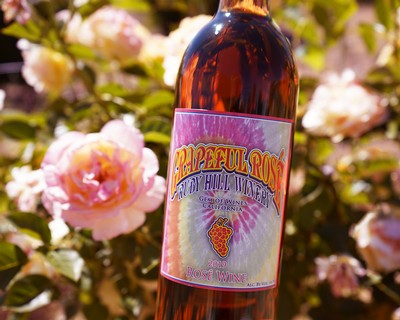 Grapeful Rosé and Roses
Grapeful Rosé and Roses
Quite fittingly, our Grapeful Rosé is highly aromatic with the scent of roses, delighting one's senses with the classic fragrance. This wine is light, crisp, and refreshing, making it the ideal beverage for summer sipping. Our Rosé earns its color from the combination of Trebbiano, a white wine grape, with the rich purple-red hue of Petit Verdot. Pink roses can symbolize grace, admiration, loveliness, and thankfulness. Pink wine, on the other hand, symbolizes something delicious (in our opinion).
Reserve Chardonnay and Honeysuckle
White wines generally offer an even broader selection of floral notes, and our Reserve Chardonnay is no exception. This rich and buttery Chardonnay has a gorgeous aroma, including layered honeysuckle, cloves, vanilla, wildflowers and lemon curd. The climbing vines of honeysuckle boast fragrant leaves in addition to their sweet-scented blossoms. These flowers are irresistible to butterflies and hummingbirds, and add another lovely layer of appeal to our Reserve Chardonnay.
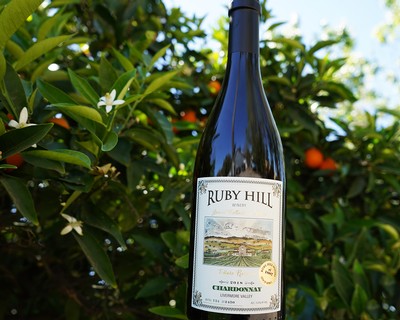 Jewel Collection Chardonnay and Orange Blossoms
Jewel Collection Chardonnay and Orange Blossoms
The semi-sweet citrus character of orange blossoms delicately frames the creamy flavors of butterscotch and s’mores on the palate as you enjoy this wine. For centuries, brides were adorned with orange blossoms which represented good luck, fertility, and innocence. Now, we appreciate the timeless enjoyment of our Jewel Chardonnay, which is a delight on the palate and perfect in every season.
Mother's Day is coming up this Sunday, so it's the perfect time to find mom's favorite flowers and buy a wine to match! Is there any better gift?
Accessories to Dye For
If you’re a long-time fan of Ruby Hill Winery, you’re probably familiar with our family of Grapeful wines. With our delightfully drinkable Grapeful Red, crisp Grapeful White, and the newest addition of Grapeful Rosé, we’re here to remind everyone that life’s too short to take too seriously. Inspired by the iconic fan-made merchandise of the Grateful Dead, our Grapeful Red label and t-shirts are a colorful reminder of good times. This week, we’ve been encouraged by our lively label to look for some options for home tie-dye projects, beyond the classic t-shirts.
Tie-dye napkins
Napkins are a lovely way to add a pop of color to any table setting. These jazzy napkins use an ice-dye technique for a subdued look, but the possibilities are as endless as your imagination.
Tie-dyed beach blanket
Whether you bring it to the beach or plan a backyard picnic, this blanket is a perfect blank canvas for artistic creativity. Choose colors inspired by summer and get ready for some time in the sunshine!
Tie-dyed socks
Whether you show them off with the classic "socks and sandals" look or prefer to keep it subtle, these socks are lively and bright. Live in technicolor and spread some smiles with this simple DIY project.
Tie-dyed shoes
These shoes are a great summer craft and require only some basic household materials. These colorful kicks use permanent markers, making them perfectly customizable to your taste!
Tie-dye tote bag
I'f you're looking for a fashionable multipurpose tote, look no further than a simple cotton bag. Perfect for books, groceries, and everything in between, a splash of color adds a dose of fun.
If you're interested in any of these projects, click the photos for step-by-step tutorials for each creation! A multitude of dyeing methods can be found across the internet, from classic spirals, to ice dyeing, to tie-dyeing with bleach. No matter the method, every tie-dyed piece is unique to the creator and can’t be replicated. This summer is a perfect time to pop open a bottle of your favorite Grapeful wine and rock a psychadelic kaleidoscope of one-of-a-kind tie-dye accessories.
If you’re looking for fresh and crisp, take a look at our Spring White Wine mixed case, on sale for just a few more days. It features our Grapeful White and Grapeful Rosé, as well as Sauvignon Blanc and Reserva Chardonnay!
How to Bee Kind this Earth Month
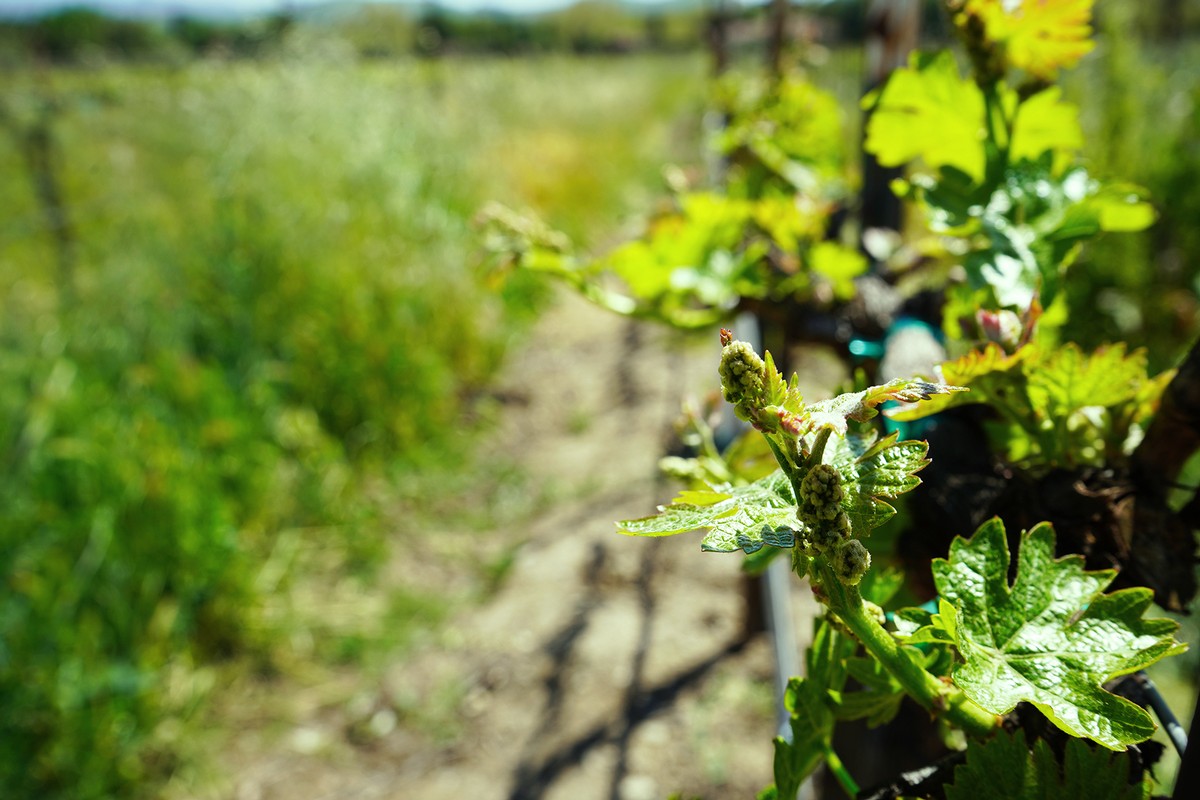
In recognition of Earth Day, we wanted to take some time to recognize the underappreciated labor of our hardworking pollinator friends. This week, we’re looking into the work done by pollinating insects and animals, helping to keep our planet beautiful, upholding ecosystems, and producing natural resources. Grapevines, our favorite crop, are what is called a self-pollinating plant—they need only wind to fertilize and reproduce. If our vines don’t need the help of bees or other pollinators, why is the health of these creatures so important to us?
The short answer is simply that the beauty and fertility of our estate as a whole, depends on fruitful pollination. In order for our soil to have all of the nutrients it needs for luscious vines (which make luscious wines) we need a rich collection of other plants in and around our vineyards. Our estate boasts flowers, shrubs, and trees of many kinds, including regal rose bushes, fragrant rosemary, and citrus and pepper trees, all of which provide food for bees. Additionally, the grasses and flowering clumps that the bees nourish on the estate provide a home for predatory insects which do the noble work of preying on insects and parasites that would otherwise prey on the grapevines. Some bees also boost pollen yields and fruitfulness in grapevines by removing the pollen-containing caps of grapevine flowers. When bees and other pollinators are able to function at their best, so is our estate!
Plan Bee: How to Help Boost Pollinator Health in Your Backyard
Prioritize your garden – Home gardens do attract pollinators! In fact, some research has shown that urban and suburban gardens have more pollinator diversity than nearby wildlands.
Go for a colorful landscape – Choosing a spectrum of colors is beautiful and helps expand the flowering season.
Use native plants in home gardening – By choosing native plants you’ll attract and support a range of busy bees and meet the needs of native wildlife.
Tolerate a little mess – It’s okay to leave dead snags, some leaf litter, and even some bare patches. Helpful ground nesting insects will thank you! A few weeds also provide food for pollinators
Support Farmers and Beekeepers – purchase local honey and locally produced organic foods. Farmers Market, here we come!
Though self-pollinating crops are more self-sustaining, at least 80% of the world’s crop species require pollination to live. It’s estimated that at least one out of every three bites of food (in addition to ½ of the world’s oils, fibers and raw materials) was made possible by the direct work of a pollinator. In the US alone, honeybees are responsible for between 1.2 and 5.4 billion dollars of agricultural productivity. We need pollinators, and they might just need us to give them a hand.
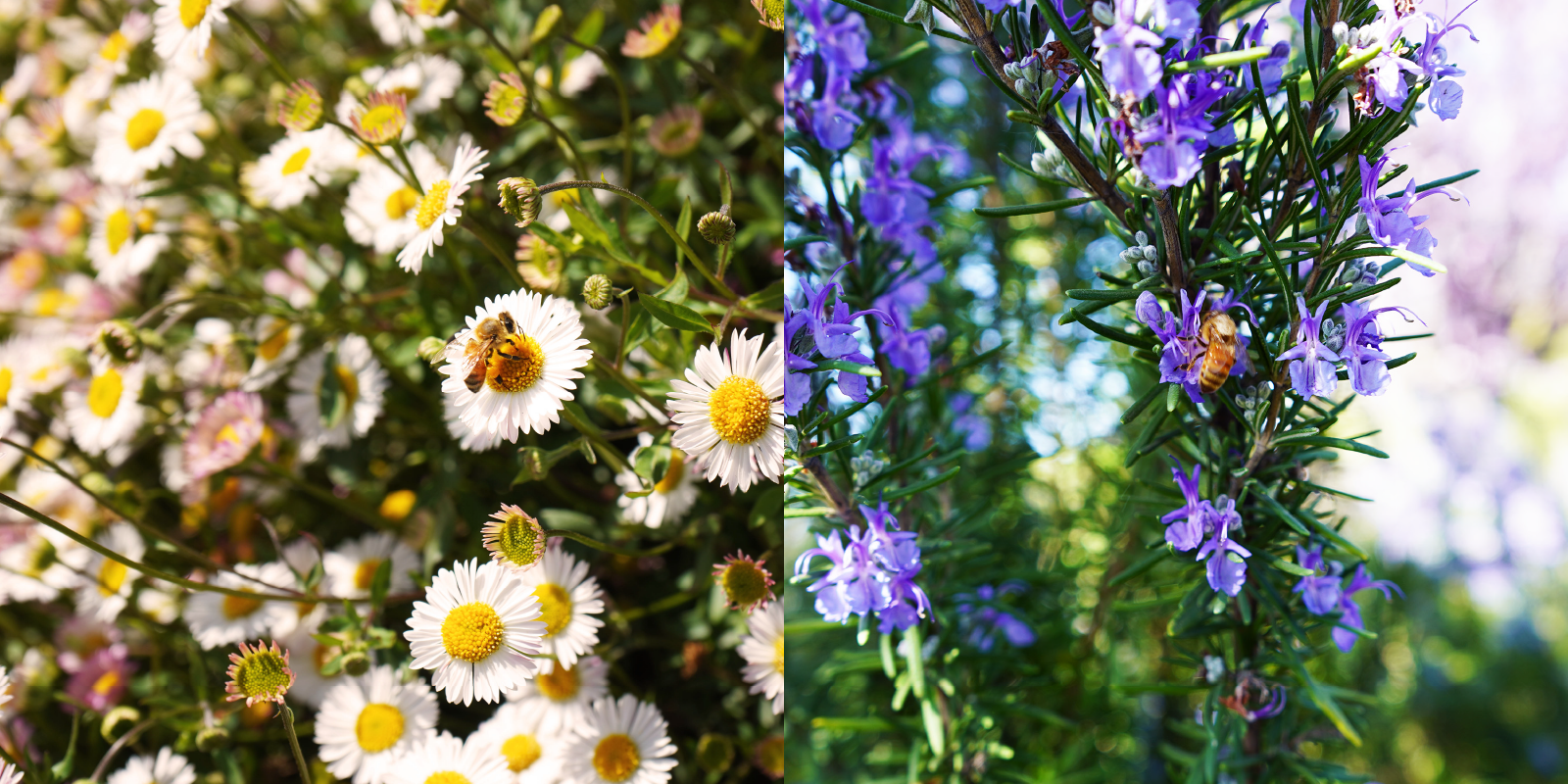
Enjoy complimentary ground shipping when you order 6 or more bottles.
Sign Up For Our Newsletter
Keep up to date on the latest wine releases, events, and promotions.
